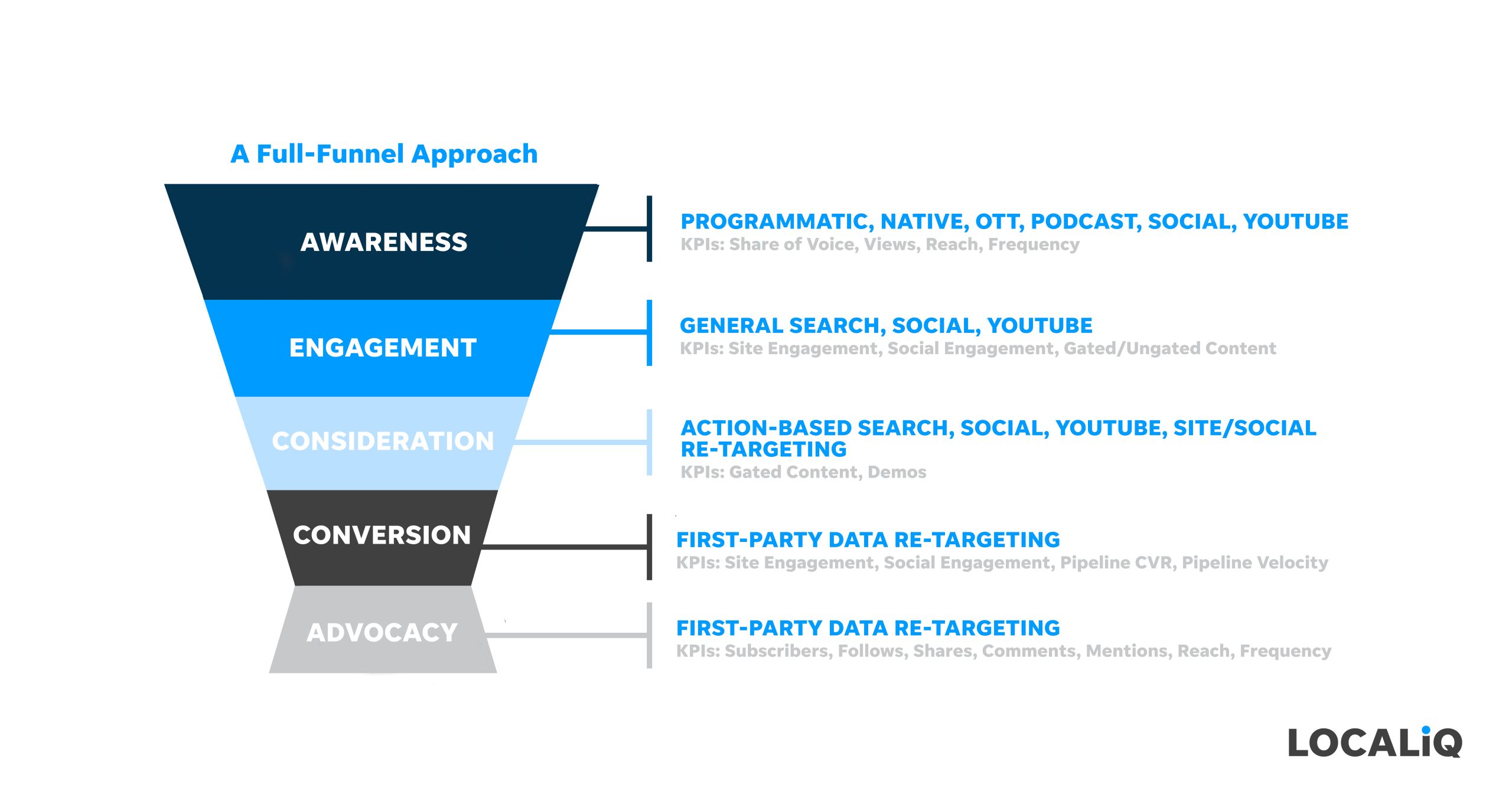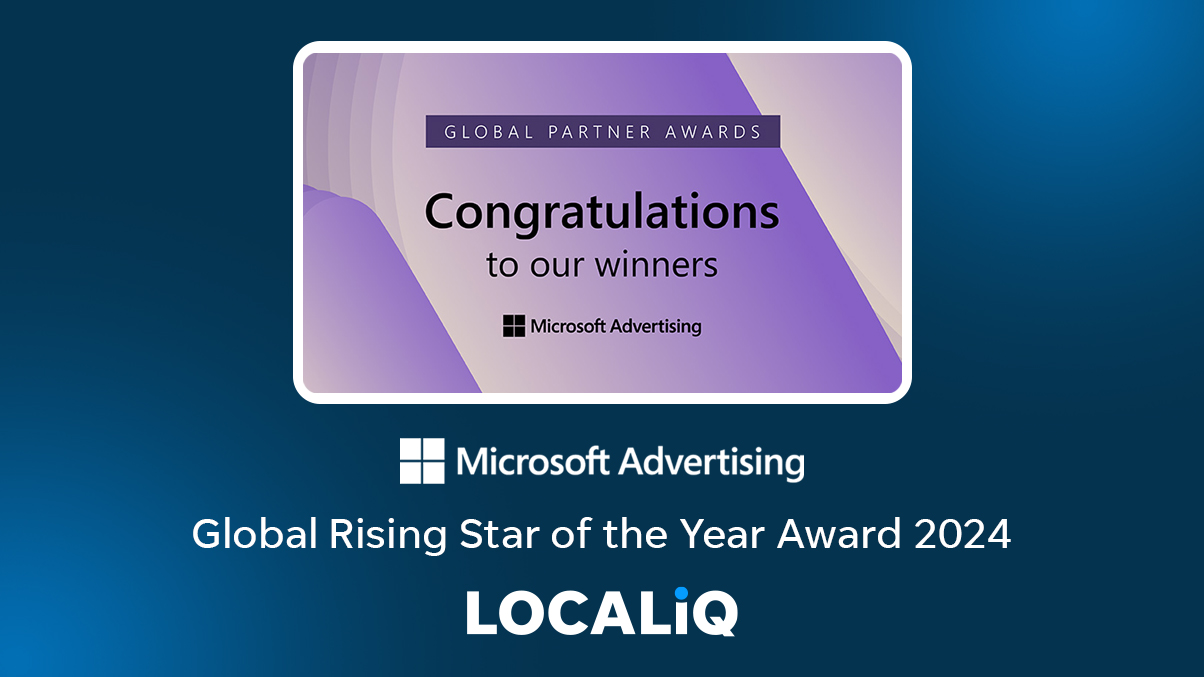Display ad campaigns can often feel difficult to manage. Considerations like how to target customers interested in your products, how to improve your campaigns, and which network is best to advertise on are all factors you will have to consider when implementing your strategy.
In this blog, we’ll look into the following:
- What is display advertising?
- Why are display ads useful?
- How to measure and optimise display ads
- Display advertising sizes
- Are display ads right for your business?
- 5 key takeaways for display ads
State of Digital Marketing Report 2024
Exclusive insights and data from the marketing strategies of over 500+ UK business
What is display advertising?
Display advertising is a type of online advertisement that encourages online audiences to take action either on social media or through other digital channels. Ads like these are typically text-based, image-based or video-based.
The overall goal of display ads is to increase click-through rates to a landing page and boost conversions. This can be accomplished by skilfully bringing together images and attention-grabbing content. These ads might have animated or visual elements, using more than just text to produce a distinctive but snappy advert. Additionally, display ads can be applied to attract returning customers and visitors. You can even use display ads to gain new clients!
When are display ads used?
They are valuable at every stage of the buyer’s journey, but you’ll still want to set key performance indicators (KPIs) to help you track the effectiveness of your display ads and campaign goals.
Here’s an example (Every funeral stage includes display elements):

Image Source| A Full-Funnel Approach by LOCALiQ.
Awareness
At this point, some examples of display components include YouTube, online video streaming, social networking, and programmatic. These advertisements, which are frequently purchased at a low cost-per-thousand (CPM), aim to increase awareness of your business’s name, products, or services at the beginning of the sales funnel.
Engagement
The display components remain the same, but less focus is placed on display ads that don’t have a clear path to exploration and conversion. For example, TV is utilised less frequently because viewers can’t immediately click through to a website after watching an advertisement.
Consideration
Your ad targeting usually includes a prospecting or retargeting-related indicator of intent. For example, you may use comparison terms, websites they’ve visited, locations, and apps that users have installed to target them with static, animated, and video ads.
Remember: This can be done via Google Ads Custom Audiences.
Conversion
Display prospecting typically deteriorates at this point since the majority of display impressions go to individuals who have demonstrated a high level of intent. For instance, show display ads to website visitors who abandoned their shopping carts or visited other highly valuable pages on your website.
Advocacy
Customers that promote your business and introduce you to new customers might be a gold mine of business for you. Staying in their sphere of influence is a terrific way to ensure that they think of or recommend you first when the time comes.
How does display advertising work?
The fundamentals of display ads are similar to those of print advertising. They are made to inform, engage, and raise awareness. They function by driving traffic from an outside source to your website.
As previously mentioned, a display ad’s goal is to entice the customer to click on it. To increase the likelihood that their advertisement will be clicked, display ads target users who exhibit specific online behaviours related to the product or service being sold.
Why are display ads useful?
One of the main factors contributing to the effectiveness of display advertising is how the adverts are presented. Display ads can persuasively communicate your business’s visual identity and can be customised to your target market with eye-catching, pertinent imagery.
Additionally, you’ll have the freedom to select the ideal text size, colours, and images to appeal to your potential buyers. Display ads allow you to demonstrate how well you understand your target market and let your creativity bloom.
Not to mention, display ads let you benefit from remarketing. As a result, you can display your ads in front of people who have already expressed interest in your business or a certain service you provide. Ultimately, conversions are more likely to occur since your audience is already aware of and interested in your business.
How to measure and optimise display ads
Given that the majority of display ads are utilised at the top of the funnel (as shown in our diagram above), measuring the performance of these advertisements can be challenging for businesses focused on short-term, revenue-based key performance indicators (KPIs). However, with little preparation, you can measure progress and gain support over the long run.
When creating your measurement plan, keep the following points in mind:
1. Naming conventions and account structure
The successful measurement of display ads depends on ensuring the appropriate naming and hierarchy. You can divide the data in your chosen data visualisation tool by arranging your campaign names, ad groups and sets, ad names, and labels with segmentation in mind.
You can use this information to decide which display ads and targeting will work best for achieving your KPIs.
2. Incorporate stakeholders
It is crucial to agree on what success looks like with all relevant parties. Before using display ads, especially at the top of the funnel, or advocacy stage, we advise you to:
- Create a map of your KPI recommendations.
- Identify why you want to promote specific products and services.
- Secure signed consent.
Set a deadline for when you plan to achieve success based on revenue as well. Too frequently, poor, or non-existent communication is to blame for dissatisfied stakeholders. The key action is being deliberate about alignment from the beginning.
3. Remodel success
With the awareness phase being at the very top of the funnel, pre-click KPIs are frequently used as the objective to saturate a target market with sufficient reach and frequency to increase brand awareness. For advertisers, the engagement stage is sometimes a weak point. The good news is that several KPIs clearly show the impact of display ads.
Here are four:
- Rise in brand search impressions.
- CTR rise for organic and sponsored search.
- Direct lift for visitors.
- Unattributed lead lift.
4. Utilise your software and platforms to ensure effective display campaigns
Platforms for analytics, ad platforms, marketing automation, CRMs, tag managers, and data enrichment products, all have something to offer.
Your business may have invested a lot of money in developing its technology stack, therefore, you should learn what’s in it and how you can benefit from it. Here are just a few examples of the tools you can use:
- Analytics (Google Analytics): Go to Multi-Channel Funnels > Conversions. You can find various useful reports here, such as the Path Length and Model Comparison Tool.
- Ad platforms (Google Ads): The Time to Conversion can be used to determine how long it typically takes a user to convert after making their initial click. The stakeholder expectations can then be set using this information.
- Tag managers (Google Tag Manager): By allowing the advertiser to deploy the necessary tracking themselves without the need for additional IT help, GTM makes it easier to add conversion tracking (such as micro-conversions) to your conversion set.
We’ll now look at the various display advertising sizes and the types you might use for your marketing campaigns.
Display advertising sizes
Different platforms have different display advertising sizes, we’ve got a whole blog dedicated to display advertising sizes, but let’s look at a few of the top-performing sizes below:
Top-performing display ad sizes
Ad size (measured in pixels):
- 300 x 250: The medium rectangle ad works best when embedded within the text, or at the bottom of an article.
- 336 x 280: The large rectangle ad also performs well when embedded within a block of text.
- 728 x 90: The leaderboard ad is a popular choice on forum sites, this ad works well at the top of the content.
- 300 x 600: The half-page ad has more space which means more content, but also more money. The design is highly appealing, visually, as well as highly clickable.
- 320 x 100: The mobile banner ad can be used as an alternative to a medium or large rectangular ad. Compared to the standard mobile leaderboard size, this one is twice as tall!
Types of display ads
Digital advertising campaigns may include several display ad types.
- Traditional display ads
Banner ads, which have been the foundation of display advertising for decades, come in a variety of sizes and file types.
- Video ads
To provide a more engaging kind of online advertising, businesses can include teaser videos or other non-static ads in feeds.
- Interstitial ads
When consumers click on links to particular web pages, these advertisements display and block their view of the intended content. In most cases, the user has the option to exit the advertisement or wait for it to disappear.
- Banner ads
These advertisements are displayed at the top of websites and resemble a banner that is suspended above the page’s primary content.
- Pop-up ads
To grab the attention of potential buyers more easily, these ads pop up at unexpected times when a user is browsing.
- Rich media ads
Rich media advertising, as opposed to text ads, integrates more advanced features, such as video, audio, and interactive components, to encourage higher user engagement rates.
- Native ads
The majority of people immediately think of the sponsored pieces that appear after the content they are reading when they hear the term native advertising. Many of those advertisements are produced by third parties and their quality might vary substantially. In actuality, native advertising typically refers to ad units that blend in with the design of the website or app they are displayed on.
Types of display advertising formats
Various types of display ads are available, as seen in the copy above. In terms of targeting strategy, display ads can also be divided into a variety of categories. The functions of each as well as a brief description are listed below:
- Topic targeting
Google will match your ad to the appropriate Display Network when you select a topic from a list.
- Site-placed ads
If you want to manually select the websites that will host your advertisement, website placement targeting is your best option.
- Affinity targeting
Through affinity targeting, customers who have demonstrated a strong interest in your market are exposed to your advertisements.
- Remarketing ads
The majority of display ads you see today are remarketing advertisements, sometimes referred to as retargeting ads. Because of the trend towards personalisation, retargeting ads are now widespread.
- Personalised ads
Google sees remarketing as part of personalised advertising that can be effective when used to segment your audience and improve user experience.
- Similar audience ads
Advertising to a similar audience looks for people with the same characteristics or passions as your current visitors.
- Custom affinity groups
With smaller, customised affinity groups, you may target specific hobbies more precisely.
- Contextually targeted ads
Instead of showing your ads to people based on their user profiles, contextually tailored advertisements are presented on websites by a range of parameters.
- Customer intent and in-market ads
You want to target customers who are actively looking for similar products or services with custom intent and in-market advertisements.
For more in-depth descriptions of display advertising, head over to our blog: What Are the Difference Types of Display Advertising Formats?
Are display ads right for your business?
Although the prices of banner display advertising are typically inexpensive, you must put in time and effort if you want a campaign that generates sales. You can decide if display ads are appropriate for your company based on the important considerations listed below.
- You desire immediate traffic and outcomes: Depending on how aggressive your campaign is, you might get hundreds or thousands of views overnight. Organically achieving this is essentially impossible.
- There is severe competition: If you have the necessary funding, you may advertise your products or services to thousands of people, providing you with an unfair advantage over rivals that don’t use display ads.
- You’ve started a new business: Nobody is familiar with your brand when you first launch your business. However, even if you don’t have much online content, display advertising still allows you to aggressively target particular demographics and remain visible.
The pros of display advertising
The use of display advertising is common in many marketing strategies. Several benefits are as follows:
Clear metrics
By examining conversion and click-through rates, display ads enable brands to analyse ad performance.
Remarketing
Businesses can employ ads to retarget individuals who have already visited particular websites to entice them to return to a page.
Demographic targeting
One of the main benefits of display ads is demographic targeting. Users can be targeted by businesses depending on their interests, the apps they use on their phones or the websites they visit.
Brand recognition
Customers can recognise brands over time if advertisements appear in a variety of locations. This might encourage additional purchases.
Pricing
Because brands may suspend campaigns and set fixed prices for clicks, this sort of advertising may be more affordable. Depending on the targeting options, prices can go up.
The cons of display advertising
While display advertising offers many advantages, it can also present some disadvantages.
Consumer frustration
Customers’ online experiences might be ruined by pop-up adverts, especially if they are enormous. This may result in unfavourable brand connections.
Banner Blindness
Adverts on websites are common, and visitors may overlook components that resemble ads. Ad engagement may be low as a result of this propensity, also known as banner blindness.
Lower CTRs
Compared to search ads, display ads typically have lower click-through rates. To ensure that ad expenditure maximises sales and page views, businesses must implement several campaigns, such as search engine optimisation (SEO) with programmatic ads.
Click here for a more in-depth look at The Advantages and Disadvantages of Display Advertising blog.
Best practice for creating and running display ads
Keep the following tips in mind if you’re looking to achieve a simple, successful display advertising campaign:
1. Keep it simple
Choose a straightforward display ad layout that communicates your offer. If you saturate your potential clients with excessive images, you will only confuse or annoy them. To avoid overwhelming your readers, don’t include too much information in your adverts. Rather, emphasise your offer and include a direct call to action (CTA).
2. Put relevance first
Your display ads must be pertinent to both your campaign objectives and target audience. Instead of annoying your prospects with pointless offers and messages, you should try to persuade them to make a purchase. By placing contextual display advertising on websites with content related to your products or services, you can ensure that individuals who share your interests will see your adverts.
By prioritising relevancy, you keep your target audience from becoming irritated. Additionally, you receive website visitors who are inclined to respond to your offerings.
3. Check and test the effectiveness of your ads
Track and test your adverts to see which banner size your audience responds to best. Create various ad sizes and formats and then compare the performance of each.
Without conducting numerous tests, you won’t be able to determine which ad type and size is optimum unless you’ve been running display ads, targeting the same demographic and providing the same goods and services for years.
5 key takeaways for display ads
Long-term benefits come from creating a full-funnel strategy that prioritises creative (mostly display ads), targeting, offer, and user experience.
A full-funnel plan must include display ads as a fundamental element. They reach a large audience and inform potential customers about the advantages, products, and services of your business in an effort to increase interest, participation, and advocacy.
Additionally, they are excellent at promoting brand distinction, culture, and identity.
Here are the top five takeaways to constantly keep in mind:
- Channels, formats, and funnel stages are all included in the incredibly broad category of display advertising.
- By assuring accurate targeting, potent creative, and pre/post click alignment, display ads can succeed.
- It’s necessary to depart from the simplicity of sponsored search to measure the success of display ads.
- To achieve results more quickly than manual A/B testing, responsive ad formats allow advertisers to test many iterations of graphic and textual creative simultaneously.
- There will always be videos! In comparison to businesses that don’t value their video content, those that create video content and reuse it in other places will have a clear edge.
Display advertising gives businesses the opportunity to go beyond marketing to their existing online following and reach new, highly targeted audiences.
Our digital display services can help you reach your desired audience by using a variety of creative formats and targeting options to boost the impact and relevance of your advertisements. In addition, by following the advice we provided, you can use all the display advertising principles you learned in this blog to expand your business.
Find out more about our display advertising services here.
State of Digital Marketing Report 2024
Exclusive insights and data from the marketing strategies of over 500+ UK business





